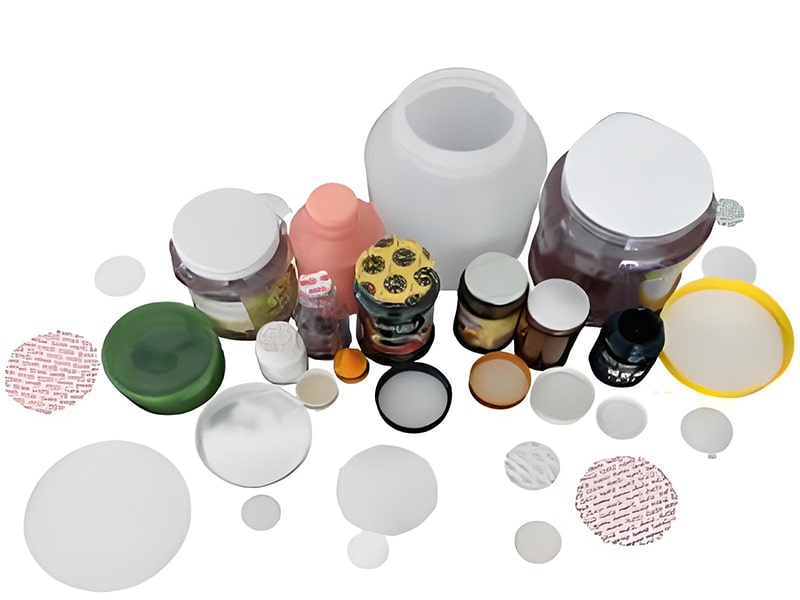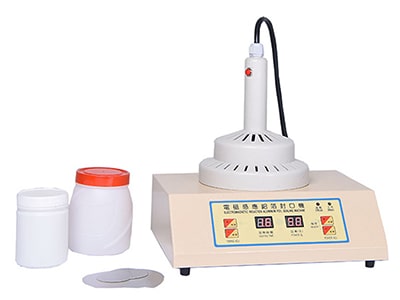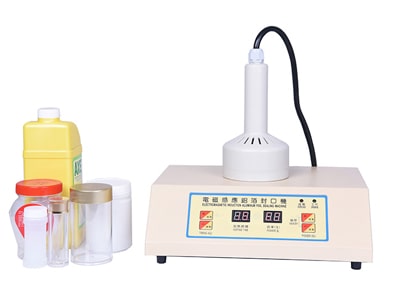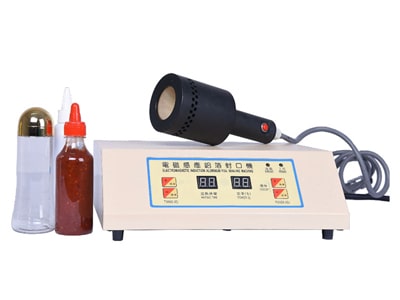In the dynamic world of packaging, ensuring product integrity and extending shelf life is paramount. From pharmaceuticals and food products to cosmetics and industrial chemicals, a secure seal is the frontline defense against contamination, spoilage, and tampering. Among the various sealing methods available, electromagnetic induction sealing stands out for its efficiency, reliability, and non-contact nature. While larger, automated induction sealing machines are common in high-volume production lines, the need for flexibility, portability, and cost-effectiveness in smaller operations, sampling, or laboratory settings has led to the widespread adoption of handheld electromagnetic induction aluminum foil sealers.
At SFXB, we understand the nuanced needs of packaging professionals. As a leading manufacturer of packaging and filling machinery, we are committed to providing innovative and reliable solutions that optimize production efficiency and product quality. Handheld electromagnetic induction aluminum foil sealers represent a cornerstone in achieving robust, tamper-evident seals, and we are excited to illuminate their benefits and capabilities.

Deciphering the Core: What is a Handheld Electromagnetic Induction Aluminum Foil Sealer?
At its heart, a handheld electromagnetic induction aluminum foil sealer, often referred to simply as a manual sealer or induction sealer, is a portable device designed to create an airtight, hermetic seal between a container’s neck and its cap, utilizing an aluminum foil liner. Unlike traditional heat sealing methods that apply direct heat to the cap and container, induction sealing works indirectly through an electromagnetic field.
Imagine a bottle or jar filled with your product, capped with a closure that contains a specialized multi-layer liner. This liner typically consists of a paperboard backing, a wax layer, and crucially, an aluminum foil layer coated with a heat-sealable polymer. The handheld induction sealer, when activated and placed over the capped container, generates a high-frequency electromagnetic field.
This field penetrates the cap and the paperboard liner but is specifically absorbed by the conductive aluminum foil layer. The resistance of the aluminum to this electromagnetic current causes it to rapidly heat up. This heat melts the wax layer, allowing the aluminum foil to come into direct contact with the heat-sealable polymer coating. The polymer then melts and bonds firmly to the lip of the container, creating a secure and impenetrable seal as it cools and solidifies. The paperboard backing, typically no longer needed after the seal is formed, often remains loosely in the cap, serving as a convenient inner seal.
The “handheld” aspect is key. Unlike large, automated inline induction sealing machines used in high-volume production lines, a handheld sealer offers flexibility, portability, and suitability for smaller batch sizes, sampling, laboratory use, or situations where containers vary in size or shape. This makes them an invaluable tool for a wide range of businesses, from small-scale producers to larger manufacturers requiring supplementary sealing capabilities.
Unveiling the Science: The Principle Behind Electromagnetic Induction Sealing
The effectiveness of a sealing machine like a handheld induction sealer lies in its elegant application of fundamental electromagnetic principles. Specifically, it leverages electromagnetic induction, a phenomenon described by Faraday’s Law of Induction. This law states that a changing magnetic field through a conductor induces a voltage in that conductor.
In the context of induction sealing, the handheld device contains an induction coil. When an alternating current flows through this coil, it generates a rapidly changing magnetic field. As the handheld unit is placed over the capped container, this oscillating magnetic field permeates the non-conductive cap and the paperboard. However, when this magnetic field encounters the conductive aluminum foil liner, it induces eddy currents within the foil.
Eddy currents are circulating electrical currents that are induced within a conductor when it is exposed to a changing magnetic field. Due to the electrical resistance of the aluminum foil, these induced eddy currents generate heat through a process known as Joule heating (or resistive heating). The amount of heat generated is directly proportional to the square of the current and the resistance of the material.
This localized and controlled heating of the aluminum foil is precisely what is needed to melt the heat-sealable polymer and create a robust bond with the container’s lip. The beauty of this method is that the heat is generated *within* the foil itself, minimizing heat transfer to the product inside or the outer container, thus preserving product quality and preventing container deformation. The sealing process is rapid, typically taking only a few seconds, making it an efficient method for achieving reliable seals.
Key Features That Elevate Performance: The Advantages of Handheld Induction Sealers
Handheld electromagnetic induction aluminum foil sealers are not just simple devices; they are engineered with features that enhance their functionality, safety, and ease of use. Understanding these features is crucial when considering the best sealing solution for your needs.
● Portability and Flexibility: The most obvious advantage is their handheld nature. This allows for sealing on demand, in various locations, and with containers of differing sizes and shapes without extensive retooling. They are ideal for laboratory settings, small production runs, and mobile operations.
● Ease of Operation (Manual Sealer): As a manual sealer, their operation is generally straightforward. Users can quickly learn the process, making them accessible even to operators without extensive technical training.
● Rapid Sealing Time: The induction process is remarkably fast, typically completing a seal in a matter of seconds. This contributes to efficient workflow, even in manual operations.
● Non-Contact Sealing: A significant advantage is that the induction head does not directly touch the container or the product. This reduces the risk of contamination and is particularly beneficial for sensitive products like pharmaceuticals or food.
● Tamper-Evident Seals: The sealed aluminum foil liner provides a clear visual indicator of tampering. If the seal is broken, it is immediately obvious to the consumer, enhancing product security and consumer confidence.
● Leak Prevention: A properly formed induction seal creates a hermetic barrier, effectively preventing leaks and spills, which is crucial for liquid and semi-liquid products.
● Extended Shelf Life: By creating an airtight seal, induction sealing protects the product from oxidation, moisture ingress, and contamination, significantly extending its shelf life.
● Energy Efficiency: Compared to some traditional heat sealing methods that require heating the entire container or cap, induction sealing focuses heat only on the aluminum foil, making it a relatively energy-efficient process.
● Suitable for Various Container Materials: Induction sealing is compatible with a wide range of non-conductive container materials, including plastics (PE, PP, PET, PVC, etc.) and glass, provided they are used with a suitable cap and aluminum foil liner.
● Adjustable Power Output: Many handheld models offer adjustable power settings, allowing users to fine-tune the induction energy based on the type of cap, liner, and container material, ensuring optimal sealing results.
● Safety Features: Reputable manufacturers incorporate safety features such as overheating protection and interlocks to ensure safe operation.
● Cost-Effectiveness for Lower Volumes: For businesses that do not require high-speed automated lines, handheld sealers offer a cost-effective entry point into reliable sealing technology.
These features combine to make handheld electromagnetic induction aluminum foil sealers a compelling choice for businesses prioritizing flexibility, reliable sealing, and product protection in lower to moderate volume applications.
Putting it into Practice: The Usage of a Handheld Induction Sealer
Operating a handheld electromagnetic induction aluminum foil sealer is designed to be user-friendly. While specific models may have slight variations, the general steps for utilizing a manual sealer are consistent and straightforward. Let’s outline the typical usage process:
Step 1: Preparation and Verification of the Liner: Before commencing the sealing process, it is absolutely crucial to ensure that the cap on each container is equipped with an intact and correctly positioned aluminum foil liner. Any damage, misalignment, or absence of the liner will prevent the induction sealing process from working. A quick visual inspection of the liner within the cap is recommended for each container.
Step 2: Secure Placement and Power Activation: Place the capped bottle or container on a stable, flat surface. Ensure the container is upright and steady to facilitate proper placement of the induction head. Connect the power cord of the handheld sealer to a suitable electrical outlet and switch on the machine’s power. The machine will typically have indicator lights to confirm that it is powered on and ready for operation.
Step 3: Positioning the Induction Head and Initiating Sealing: Carefully pick up the handheld induction head. Precisely and firmly place the induction head onto the top of the capped bottle, ensuring it is centered over the cap. The bottom surface of the induction head should make full and even contact with the cap. Once the induction head is correctly positioned, press the designated start button or trigger on the handheld unit. Upon activation, the machine will generate the electromagnetic field. You may hear a gentle hum or see an indicator light confirming the sealing process is in progress.
Step 4: Monitoring and Completion of the Seal: The sealing process is rapid. The machine’s indicator lights or an audible signal will typically indicate when the induction cycle is complete. This usually takes only a few seconds. Once the sealing duration is finished, release the start button (if applicable) and carefully lift the induction head away from the bottle cap.
Step 5: Quality Control: Checking the Final Seal: A critical final step is to visually inspect the sealed container and, if appropriate for the product and packaging, gently test the seal. Examine the surface of the cap for any signs of scorching or damage (which could indicate excessive power or incorrect application). More importantly, check the container itself. You can often gently squeeze the bottle (if it’s a flexible container) to check for air leaks, or in some cases, carefully attempt to peel back the aluminum foil liner to ensure it is firmly bonded to the container’s lip. A properly sealed liner will be difficult to remove cleanly and will often tear.
Following these steps diligently ensures that each container receives a secure and reliable electromagnetic induction seal, safeguarding the product within. While this is a manual process, the speed and efficiency of the induction technology make it a highly productive method for lower volume requirements.
Applications Across Industries: Where Handheld Induction Sealers Shine
The versatility and benefits of handheld electromagnetic induction aluminum foil sealers make them valuable tools across a wide spectrum of industries:
● Food and Beverage: Sealing jars of jams, sauces, condiments, powdered drinks, and bottles of juices or nutritional supplements to maintain freshness, prevent spoilage, and provide tamper evidence.
● Pharmaceuticals: Sealing bottles of pills, capsules, powders, and liquid medications to ensure product integrity, prevent contamination, and provide a critical tamper-evident barrier for patient safety.
● Cosmetics and Personal Care: Sealing jars of creams, lotions, gels, and bottles of liquids to prevent leaks, preserve product quality, and offer a premium, secure packaging experience.
● Chemicals and Industrial Products: Sealing containers of cleaning supplies, lubricants, adhesives, and other chemicals to prevent spills, ensure safe handling, and maintain product efficacy.
● Nutraceuticals and Dietary Supplements: Sealing bottles of vitamins, supplements, and health products to preserve potency, prevent moisture degradation, and provide consumer confidence.
● Agricultural Products: Sealing containers of fertilizers, pesticides, and other agricultural chemicals to prevent leakage and maintain product stability.
● Laboratory and Research: Ideal for sealing samples, reagents, and laboratory supplies where flexibility and controlled sealing are required.
● Start-up and Small Businesses: Provides an affordable and efficient way for new businesses to implement professional-grade sealing for their products.
● Sampling and Pilot Runs: Convenient for sealing small batches for market testing, quality control, or pilot production runs.
The adaptability of handheld induction sealers to various container types and product categories underscores their importance in modern packaging workflows.
Choosing the Right Handheld Induction Sealer: Factors to Consider
While all handheld induction sealers operate on the same fundamental principle, there can be variations in features, performance, and suitability for specific applications. When selecting a manual sealer for your needs, consider the following factors:
● Power Output: Ensure the sealer has sufficient power to effectively seal your specific cap, liner, and container combination. Higher power is generally needed for larger caps or thicker liners.
● Induction Head Size: The diameter of the induction head should match the size of your bottle caps for optimal sealing performance. Some models may come with interchangeable heads or offer a range of sizes.
● Container Compatibility: Verify that the sealer is compatible with the materials and sizes of the containers you will be using.
● Adjustable Sealing Time and Power: Models with adjustable settings offer greater flexibility and allow for fine-tuning the sealing process for different packaging materials.
● Safety Features: Look for features like overload protection, cooling systems, and ergonomic designs to ensure safe and comfortable operation.
● Durability and Construction: Consider the build quality and materials used in the sealer’s construction, especially if it will be used in a demanding production environment.
● Manufacturer Reputation and Support: Choose a reputable manufacturer with a track record of producing reliable packaging machinery and offering good customer support.
● Cost: Balance your budget with the features and performance required for your application.
By carefully evaluating these factors, you can select a handheld induction sealer that effectively meets your packaging requirements and contributes to the success of your operations.
Conclusion: A Powerful Tool for Product Integrity
In conclusion, the handheld electromagnetic induction aluminum foil sealer is a powerful and versatile tool in the packaging arsenal. Understanding its fundamental principles, from the generation of electromagnetic fields to the localized heating of the aluminum foil, reveals the elegance and efficiency of this sealing technology. Its key features, including portability, rapid sealing, non-contact operation, and the creation of tamper-evident seals, offer significant advantages for businesses across diverse industries.
The straightforward usage of a manual sealer makes it accessible for various applications, from small-scale production to laboratory work and sampling. By providing reliable leak prevention and extended shelf life, handheld induction sealers play a crucial role in safeguarding product quality and ensuring consumer satisfaction.
At SFXB(https://www.xuebapack.com/), we are dedicated to providing high-quality packaging and filling machinery that empowers our customers to achieve their production goals. Handheld electromagnetic induction aluminum foil sealers are an integral part of a comprehensive packaging strategy, offering flexibility, efficiency, and reliable product protection. Whether you are a small business starting out or a larger enterprise seeking supplementary sealing solutions, a handheld induction sealer can be a valuable investment in enhancing your packaging operations and ensuring the integrity of your products. Explore the possibilities and unlock the power of secure sealing with this remarkable technology.
| References: | |
| 1. | Principles of Electromagnetic Induction in Packaging Applications Retrieved from:Institute of Packaging Professionals (IoPP) ; |
| 2. | Advanced Aluminum Foil for Tamper-Evident Packaging: A Material Science Perspective——Aluminum Association & Materials Research Society (2021) Retrieved from:Journal of Materials Engineering and Performance (DOI: 10.1007/s11665-021-05876-z); |
| 3. | ISO 15378:2023 Packaging Machinery Safety Standards Retrieved from:International Organization for Standardization (ISO) |
| 4. | Pharmaceutical Packaging Integrity: Case Studies in Tamper-Evident Sealing Retrieved from: PMMI (Packaging Machinery Manufacturers Institute) |









Comments